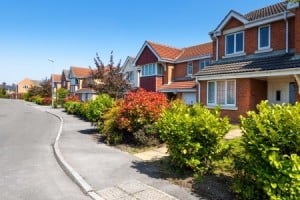Five Ways Real Estate Developers Can Kill The Commute Problem And Enhance Sustainable Living

While there may always be a market for suburban homes with yards and picket fences, there is an increasing hunger for well-balanced urban communities. Well-balanced urban communities can provide all or some of the following: access to alternative and public transportation, green space, communal space, public art or art exhibit space, mixed use retail/office/living, housing in a variety of sizes and prices, green living features such as environmentally friendly building materials, access to locally grown food and locally produced goods, etc. One of the main ways in which a well-balanced urban community is both user-friendly and environmentally friendly is in transportation.
Kill the Commute Problem
There is ample evidence that humans do better in communities than alone. We are social animals by nature. And the environments people live in can impact whether they experience community or isolation. One element of isolation in modern industrial and post-industrial societies is commuting. One study into the psychological effects of long commutes found them to negatively and measurably affect people’s mental health. In a city like Miami, where much of my business is located, it is not unusual to hear people citing traffic as a primary reason for moving out of the city. There are cost-effective ways we as developers can provide customers with the solutions they’re looking for to this modern-day malaise
1. Build with new technologies in mind, such as incorporating passenger drone ports into designs. At one project site, we are incorporating passenger drone landing pads on the roof of the building. This allows us to utilize the roof and make commuting easier for residents. And an approach like this means fewer cars on the road, less traffic congestion, and less smog and particulate matter causing breathing problems. Thoughtful design on the part of developers can help alleviate some of the most pressing problems facing cities across the world. Passenger drones are the newest commuting technology, and many municipalities are currently discussing the logistics of this technology, and we developers can be of use to our communities by being part of the discussion.
2. Create well-balanced, pedestrian-friendly, transit-oriented communities where people can work, live, shop, be entertained, experience art, etc., without setting foot in a car, in the process reducing emissions harmful to human health and the environment. We as developers can take into account transit routes and even work with local transit authorities to ensure easier access to the projects we build. We can provide sidewalks that link with existing pedestrian walkways. By building for a variety of uses and users, we can help encourage people to live, shop, work and be entertained in their own communities, thus reducing the need to go elsewhere with a consequent reduction in urban air pollution, as well as facilitating walkability which leads to better health outcomes. Recent estimates show that physical inactivity, linked to poor walkability and lack of access to recreational areas, accounts for 3.3% of global deaths, according to the World Health Organization.
3. Revitalize existing neighborhoods to encourage people to stay in the communities they know and love and potentially close to the people they know and love. By doing infill and larger balanced living communities in the denser areas of cities, we can offer people who might otherwise move far away from their communities and the personal ties they have in them the opportunity to live the way they want to without forsaking those human and geographical connections. This also provides jobs in the community and opportunities for local vendors and service providers to serve the communities where they live and work.
4. Incorporate attractive and practical design elements into the built environment. This encourages both physical activity and social interaction with such amenities as green spaces, public art installations, performance spaces and farmers markets, all of which may lead to better public health outcomes and an overall increase in quality of life.
5. Include a variety of sizes and prices of units in the same project. This, together with access to transit and services, allows for multigenerational living. This in turn can cut back on residents’ needs to commute to visit their older loved ones and increases older people’s independence.
Let’s face it: Real estate developers have often been characterized as “the bad guys” in everything from the Disney movie Up to news articles bemoaning the midprice and affordable housing in today’s cities falling prey to “developer greed.” But it doesn’t have to be that way. We can meet both our financial goals and our duties to our fellow humans by listening to what consumers want and creatively, sustainably, responsibly and joyfully incorporating those needs and wants into our projects.
Source: forbes.com















 Accessibility
Accessibility